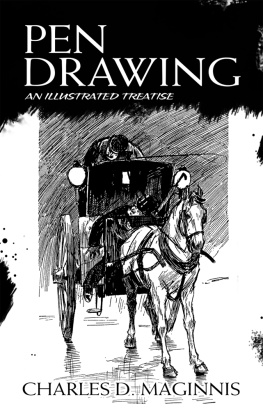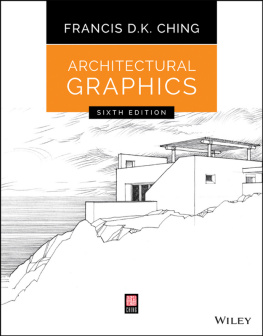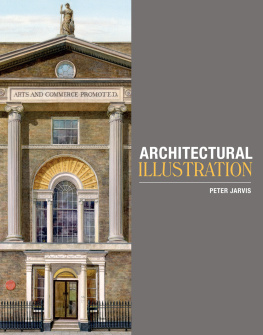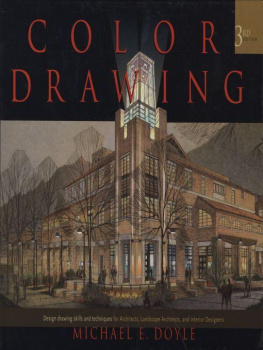PEN DRAWING
An Illustrated Treatise

Bibliographical Note
This Dover edition, first published in 2016, is an unabridged republication of the sixth edition, originally published by Bates & Guild Company, Boston, and B. T. Batsford, London, in 1913.
Library of Congress Cataloging-in-Publication Data
Names: Maginnis, Charles Donagh, 18671955, author.
Title: Pen drawing : an illustrated treatise / Charles Maginnis.
Description: Mineola, New York : Dover Publications, Inc., 2016. | This Dover edition of Pen Drawing: An Illustrated Treatise, first published in 2016, is an unabridged republication of the sixth edition, originally published by Bates & Guild Company, Boston, and B. T. Batsford, London, in 1913.
Identifiers: LCCN 2016013923| ISBN 9780486810751 | ISBN 0486810755
Subjects: LCSH: Pen drawing.
Classification: LCC NC905 .M25 2016 | DDC 741.2dc23
LC record available at http://lccn.loc.gov/2016013923
Manufactured in the United States by RR Donnelley
81075501 2016
www.doverpublications.com
ACKNOWLEDGMENT
To Mr. David A. Gregg and to Mr. Bertram G. Goodhue, who have generously made special drawings for this little book, and to the Publishers who have courteously allowed me to make use of illustrations owned by them, my thanks and my cordial acknowledgments are due.
C. D. M.
LIST OF ILLUSTRATIONS
PEN DRAWING
An Illustrated Treatise
CHAPTER I
STYLE IN PEN DRAWING
Art, with its finite means, cannot hope to record the infinite variety and complexity of Nature, and so contents itself with a partial statement, addressing this to the imagination for the full and perfect meaning. This inad-equation, and the artificial adjustments which it involves, are tolerated by right of what is known as artistic convention; and as each art has its own particular limitations, so each has its own particular conventions. Sculpture reproduces the forms of Nature, but discards the color without any shock to our ideas of verity; Painting gives us the color, but not the third dimension, and we are satisfied; and Architecture is purely conventional, since it does not even aim at the imitation of natural form.
The Conventions of Line Drawing
Of the kindred arts which group themselves under the head of Painting, none is based on such broad conventions as that with which we are immediately concerned the art of Pen Drawing. In this medium, Natures variety of color, when not positively ignored, is suggested by means of sharp black lines, of varying thickness, placed more or less closely together upon white paper; while natural form depends primarily for its representation upon arbitrary boundary lines. There is, of course, no authority in Nature for a positive outline: we see objects only by the difference in color of the other objects behind and around them. The technical capacity of the pen and ink medium, however, does not provide a value corresponding to every natural one, so that a broad interpretation has to be adopted which eliminates the less positive values; and, that form may not likewise be sacrificed, the outline becomes necessary, that light objects may stand relieved against light. This outline is the most characteristic, as it is the most indispensable, of the conventions of line drawing. To seek to abolish it only involves a resort to expedients no less artificial, and the results of all such attempts, dependent as they necessarily are upon elaboration of color, and a general indirectness of method, lack some of the best characteristics of pen drawing. More frequently, however, an elaborate color-scheme is merely a straining at the technical limitations of the pen in an effort to render the greatest possible number of values.
It may be worth while to inquire whether excellence in pen drawing consists in thus dispensing with its recognized conventions, or in otherwise taxing the technical resources of the instrument. This involves the question of Style, of what characteristic pen methods are, a question which we will briefly consider.
What Constitutes Style
It is a recognized principle that every medium of art expression should be treated with due regard to its nature and properties. The sculptor varies his technique according as he works in wood, granite, or marble; the painter handles his water-color in quite another manner than that he would employ on an oil-painting of the same subject; and the architect, with the subtle sense of the craftsman, carries this principle to such a fine issue as to impart an individual expression even to particular woods. He knows that what may be an admirable design when executed in brass may be a very bad one in wrought-iron and is sure to be an absurdity in wood. An artistic motive for a silver flagon, too, is likely to prove ugly for pottery or cut-glass, and so on. There is a genius, born of its particular properties, in every medium, which demands individual expression. Observe, therefore, that Art is not satisfied with mere unrelated beauty of form or color. It requires that the result confess some sensible relation to the means by which it has been obtained; and in proportion as it does this, it may claim to possess that individual and distinctive charm which we call Style. It may be said, therefore, that the technical limitations of particular mediums impose what might properly be called natural conventions; and while misguided ambition may set these conventions aside to hammer out effects from an unwilling medium, the triumph is only mechanical; Art does not lie that way.
The Province of the Pen
Ought the pen, then, to be persuaded into the province of the brush ? Since the natures of the two means differ, it does not stultify the water-color that it cannot run the deep gamut of oil. Even if the church-organ be the grandest and most comprehensive of musical instruments we may still be permitted to cherish our piano. Each has its own sphere, its own reason for being. So of the pen, the piccolo flute of the artistic orchestra. Let it pipe its high treble as merrily as it may, but do not coerce it into mimicking the bassoon.
Pen drawing is most apt to lose its individuality when it begins to assume the characteristics of wash-drawing, such as an elaborate massing of grays, small light areas, and a general indirectness of method. A painter once told me that he was almost afraid to handle the pen, It is so fearfully direct, he said. He understood the instrument, certainly, for if there is one characteristic more than another which should distinguish pen methods it is Directness. The nature of the pen seems to mark as its peculiar function that of picking out the really vital features of a subject. Pen drawing has been aptly termed the shorthand of Art; the genius of the pen-point is essentially epitome.

If we turn to the brush, we find its capacity such that a high light may be brought down to a minute fraction of an inch with a few swift strokes of it; whereas the tedious labor, not to speak of the actual technical difficulties, encountered in attempting such an effect of color with pen and ink, indicates that we are forcing the medium. Moreover, it is technically impossible to reproduce with the pen the low values which may be obtained with the brush; and it is unwise to attempt it. The way, for example, in which Mr. Joseph Pennell handles his pen as compared with that in which he handles his brush is most instructive as illustrating what I have been maintaining. His pen drawings are pitched in a high key, brilliant blacks and large light areas, with often just enough half-tone to soften the effect. His wash-drawings, on the contrary, are so utterly different in manner as to have nothing in common with the others, distinguished as they are by masses of low tone and small light areas. Compare . Observe that there is no straining at the technical capacity of the pen or of the brush; no attempt to obtain an effect in one medium which seems to be more naturally adapted to the other. Individuality is imparted to each by a frank concession to its peculiar genius.
Next page










